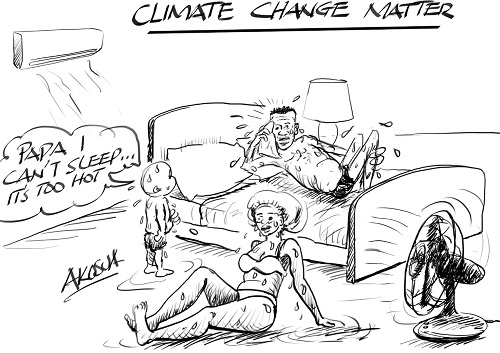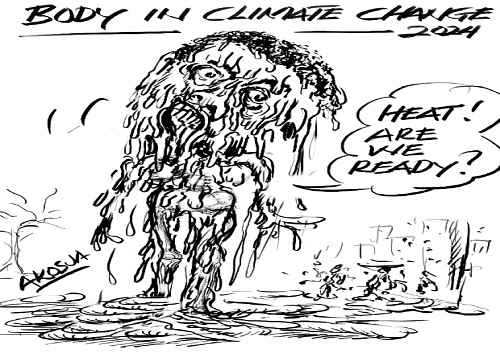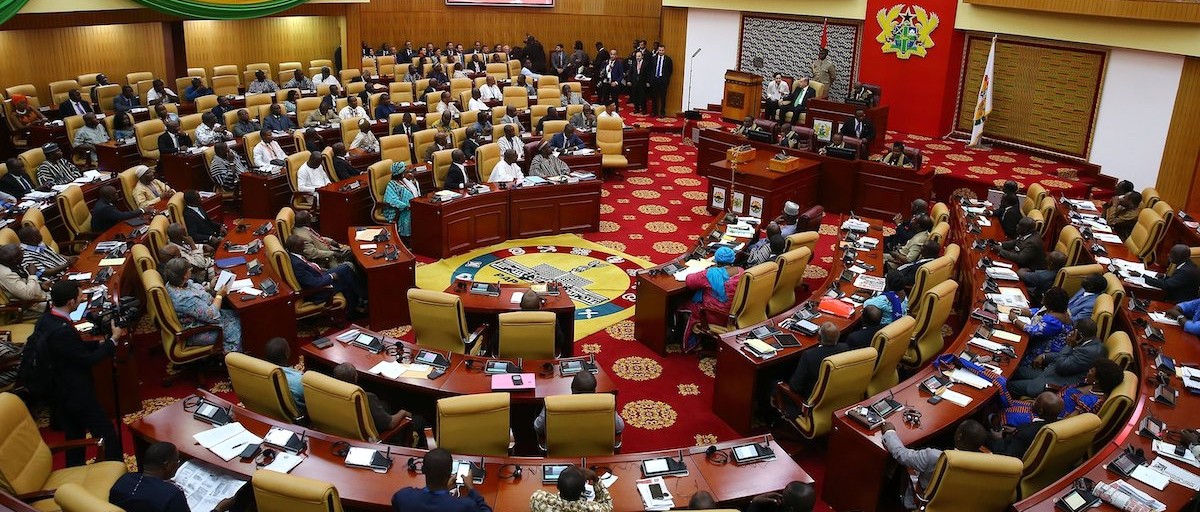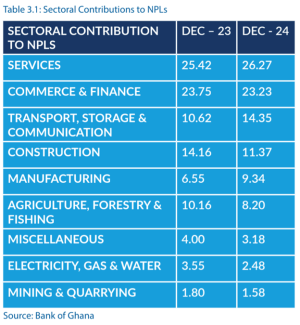
The earth's climate has changed throughout history? the change attributable to very small variations in the earth's orbit that alter or vary the amount of solar energy received by planet earth.
Indeed, the attention of the world had, since the late 1970s, been drawn to the buildup of carbon dioxide in the atmosphere which threatens to melt the polar ice sheets and irreversibly change the earth's climate.
Ninety-seven percent of climate scientists agree that climate-warming trends over the past century are extremely likely due to human activities, with most of the leading scientific organisations worldwide issuing public statements endorsing this position.
According to independent analyses by the National Aeronautics and Space Administration's (NASA's), Goddard Institute for Space Studies and the National Oceanic and Atmospheric Administration (NOAA), the earth's 2016 surface temperatures were the warmest since modern record-keeping began in 1880.
Global-averaged temperatures in 2016, the analyses indicate, were 1.78 degrees Fahrenheit (0.99 degrees Celsius) warmer than the mid-20th century mean. This makes 2016 the third year in a row to set a new record for global average surface temperatures.
The oceans, the evidence reveals, have absorbed much of this increased heat, with the top 700 meters (about 2,300 feet) of ocean showing warming of more than 0.4 degrees Fahrenheit since 1969.
As a result, the Greenland and Antarctic ice sheets have decreased in mass, with data from NASA's Gravity Recovery and Climate Experiment showing that Greenland lost an average of 286 billion tons of ice per year between 1993 and 2016, while Antarctica lost about 127 billion tons of ice per year during the same time period?with the rate of Antarctica ice mass loss tripling in the last decade while both the extent and thickness of Arctic sea ice has declined rapidly over the last several decades.
The National Snow and Ice Data Center's World Glacier Monitoring Service reveals that Glaciers are retreating almost everywhere around the world -- including in the Alps, Himalayas, Andes, Rockies, Alaska and Africa.
The Copenhagen diagnosis? the Fourth Assessment Report (AR4) of the Intergovernmental Panel on Climate Change (IPCC)) ? notes that since the beginning of the Industrial Revolution, the acidity of surface ocean waters has increased by about 30 percent as a result of humans emitting more carbon dioxide into the atmosphere and hence more being absorbed into the oceans, with the amount of carbon dioxide absorbed by the upper layer of the oceans increasing by about 2 billion tons per year.
Again, according to the National Snow and Ice Data Center, Satellite observations reveal that the amount of spring snow cover in the Northern Hemisphere has decreased over the past five decades and that the snow is thawing earlier.
To that effect, the evidence shows, global sea level rose by about 8 inches in the 20th century with the rate in the last two decades, registering nearly double that of the last century and accelerating slightly every year.
There is, therefore, a compelling evidence of climate change which points to developing countries as those to be hard-hit by the changing climate and new interrelated risks.
Climate change is, therefore, expected to worsen existing development challenges through diminished agricultural productivity and food accessibility, increased water scarcity, financial insecurity and the incidence of disease and illness, with dire consequences for the future of life on earth by the end of the 21st century.
In spite of the evidence, very little has been done to alter the situation.
Some action to combat climate change and its impacts has, however, been cited in the United Nations (UN) Sustainable Development Goals (SDGs) ? the roadmap of the post-2015 development agenda.
SDG 13, for example, specifically, therefore, refers to the vital action to combat climate change and its impacts. That vital action means adapting to climate change by taking action to manage or reduce the adverse consequences of a changed climate.
Thus to manage current and future climate, a local government organisation may need to adapt its assets, resources and operations. Adaptation to climate change, therefore, refers to actions required to transition from a phase of awareness to the construction of actual strategies and plans in societies.
Indeed, the combined efforts of a broad range of international organisations, scientific reports and media coverage have raised awareness of the importance of adaptation to climate change, fostering a growing number of adaptation responses in developed and developing countries? representing a major progress since the Intergovernmental Panel on Climate Change (IPCC) Fourth Assessment Report (AR4).
Having identified the importance of adaptation, the next step will be how to plan the adaptation, which is the process of analyzing, selecting and prioritizing measures in response to climate change.
For local councils, adaptation planning on climate change can help to embed adaptive measures into council operations and processes.
Climate change threats addressed in a typical adaptation plan include emergencies (such as bushfires, more frequent storms, heatwaves and flooding) or longer-term issues such as rising average temperatures, water resourcing and asset maintenance.
A government, regional authority or community must plan and decide on how best to reduce its vulnerability to those impacts, and on how adaptation practices can be implemented in the most effective manner.
The range of practices that can be used to adapt to climate change is diverse and includes changes in behaviour in water use or farming practices, structural changes in the design specification of bridges and roads, and alterations to laws and regulations.
Ghana's National Adaptation Plan Framework
Ghana is not immune to the wind of climate change that is blowing across the globe. Indeed, available information points to severe impacts of climate change on Ghanaian men, women and children, with wide-ranging implications for the social and economic system, and the national development process as a whole.
In view of the risks and the country's vulnerability to climate change, and in response to international obligations, the Government of Ghana has developed a National Adaptation Plan (NAP) Framework that seeks to fully integrate climate change into economic, environmental and social decision-making.
Ghana's NAP process seeks to identify climate adaptation actions in the medium- and long-term; facilitate institutional co-ordination around climate change adaptation; and accelerate the mobilisation of funds for climate change adaptation.
The NAP process was initiated under the United Nations Framework Convention on Climate Change (UNFCCC) in 2010 to address medium- and long-term climate adaptation needs of developing countries that allow countries to identify, address and review their evolving adaptation needs.
The purpose of Ghana's NAP Framework is, therefore, to provide an overall outline that will guide the state in developing, co-ordinating and implementing its NAP process and to ensure that NAP does not unnecessarily add to the proliferation of national planning processes and related documents.
The United States Department, through the International Institute for Sustainable Development (IISD) is supporting Ghana to build a high-level momentum to strategically and coherently address medium- and long-term adaptation planning. IISD is working with the Environmental Protection Agency (EPA) to achieve this objective while direct implementation of activities under this project is being undertaken by Abantu for Development, a gender and policy advocacy Non-Governmental Organization (NGO).
Led by the Ministry of Environment, Science, Technology and Innovation, through the EPA, with support from IISD, and in collaboration with the Ministry of Finance and the National Development Planning Commission, the Government of Ghana has taken a number of actions to support climate change adaptation planning.
These actions include the development of a National Climate Change Policy (NCCP) in 2013 to provide strategic direction and co-ordination on climate change issues, including climate adaptation, in the country.
Earlier, in 2012, a National Climate Change Adaptation Strategy (NCCAS) had been developed for the period 2010 to 2020 with the primary goal of "enhancing Ghana's current and future development to climate change impacts by strengthening its adaptive capacity and building the resilience of society and ecosystems".
In addition, Ghana submitted its Nationally-Determined Contributions (NDCs) which also prioritise adaptation actions to address climate change, while various public and private institutions have also initiated adaptation efforts across the local, regional and national scales in the country.
The current approach to climate adaptation planning in Ghana encourages Ministries, Departments and Agencies (MDAs) to integrate adaptation into policies, plans and programmes, with the long-term vision of mainstreaming adaptation into districts' medium-term development plans, while Climate Change Units have been established in the EPA, and MDAs as well as in the energy, forestry and agriculture sectors.
In October 2017, Ghana submitted a NAP Readiness Proposal to the Green Climate Fund (GCF) for financial support to advance the course of climate adaptation planning in the country?a proposal currently at the review stage.
The main objective of the Readiness Proposal is to enhance institutional co-ordination and strengthen capacity at all levels of governance to implement the NAP process.
It is expected that the Readiness Proposal will launch the NAP process, which will produce a costed adaptation strategy for the country and produce the tools, mechanisms, systems and information with which to update the NAP process at regular intervals and to mainstream adaptation into sector and district development plans.
The Readiness Proposal is also expected to help in the development of a NAP document for climate change adaptation in the country.
The writer is a free-lance journalist and a lawyer.
Hits: 9
Read Full Story





















Facebook
Twitter
Pinterest
Instagram
Google+
YouTube
LinkedIn
RSS